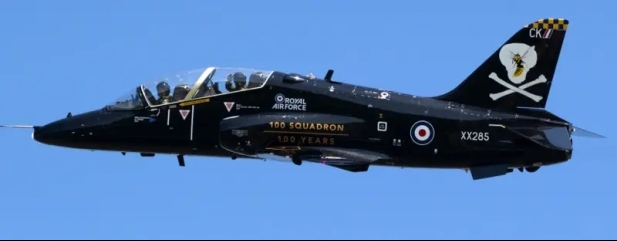Archived article
Please note that tax, investment, pension and ISA rules can change and the information and any views contained in this article may now be inaccurate.
UK and European defence stocks surge as governments mull security spending hike

European defence stocks are becoming hot property again as governments across the continent signal an urgent need to increase military spending. The pan-European Stoxx 600 closed the session on 17 February 0.54% higher, lifted by a 4%-plus jump in the Stoxx 600 Aerospace and Defence index.
With geopolitical tensions intensifying and European governments committing to increased military spending, analysts at investment bank Morgan Stanley re-spun their bullish thesis on the sector, identifying key players such as Germany’s Rheinmetall (RHMG:ETR), Italy’s Leonardo (LDO:BIT) and the UK’s BAE Systems (BA.) as preferred stocks.
‘Comments by secretary-general Mark Rutte that NATO members will have to boost their defence spending by ‘‘considerably more than 3%’’ of GDP put a rocket underneath defence stocks,’ said Russ Mould, investment director at AJ Bell.
All three of Morgan Stanley’s picks turned sharply higher at the start of the week, chalking up gains of between 14% and 8%, with Sweden’s Saab (SAAB-B:STO) and Thales (HO:EPA) of France also surging.
‘BAE Systems jumped to the top of the FTSE 100 risers list as investors hoped its earnings prospects would be greatly improved. Mid-cap defence player Chemring (CHG) also enjoyed a boost,’ pointed out AJ Bell’s Mould.
Shares in defence companies had already rallied hard since Russia invaded Ukraine as investors took the view rising geopolitical worries would spur governments around the world to fortify their own defences.
Rutte’s comments effectively confirm this line of thinking and have acted as another share price catalyst, even though markets had already priced in a stronger earnings environment for the sector.
The fact Donald Trump is keen for European countries to spend as much as 5% of GDP on defence adds to the narrative supporting the sector as leading NATO members haven’t spent that proportion of GDP on defence since the peak Cold War years.
In 2024, the UK’s share of GDP spent on defence was 2.33%, while France and Germany’s GDP shares were 2.06% and 2.12% respectively, behind European leader Poland (4.12%). Meanwhile, the US spent 3.37% of GDP on defence last year.
At the Munich Security Conference, the European Commission said it was considering an escape clause excluding defence-related expenditure from EU budget deficit calculations, a move which could allow governments greater financial flexibility to boost military investment.
Analysts at Stifel believe a new NATO spending target of 2.5% to 3% could result in an annual increase of between $85 billion and $176 billion in European defence expenditure alone.
DISCLAIMER: Financial services company AJ Bell referenced in this article owns Shares magazine. The author of this article (Steven Frazer) and the editor (Ian Conway) own shares in AJ Bell.
Important information:
These articles are provided by Shares magazine which is published by AJ Bell Media, a part of AJ Bell. Shares is not written by AJ Bell.
Shares is provided for your general information and use and is not a personal recommendation to invest. It is not intended to be relied upon by you in making or not making any investment decisions. The investments referred to in these articles will not be suitable for all investors. If in doubt please seek appropriate independent financial advice.
Investors acting on the information in these articles do so at their own risk and AJ Bell Media and its staff do not accept liability for losses suffered by investors as a result of their investment decisions.
Issue contents
Feature
Great Ideas
Investment Trusts
Money Matters
My Portfolio
News
- Airbnb shares enjoy record day after strong Q4 and growth initiative
- Strong regulatory tailwinds keep XPS Pensions in the ascendency
- Wood Group shares hit an all-time low after review and cash flow revelation
- Is the Rolls-Royce recovery complete?
- Market relaxed about outcome of crucial European poll for now
- UK and European defence stocks surge as governments mull security spending hike
 magazine
magazine








